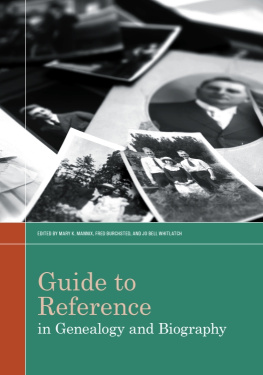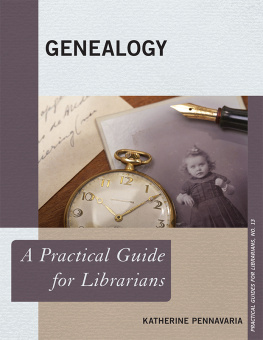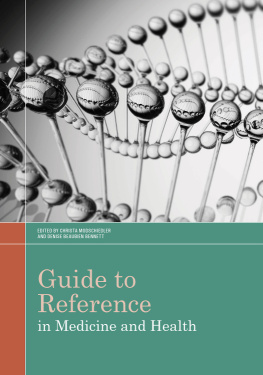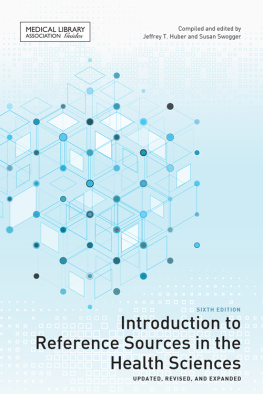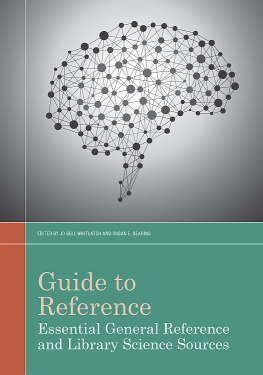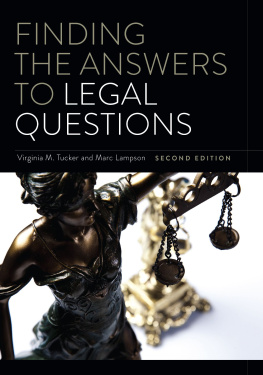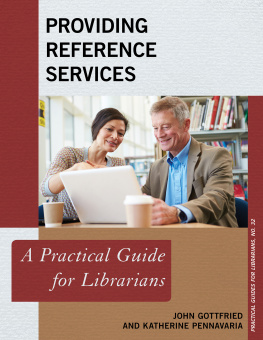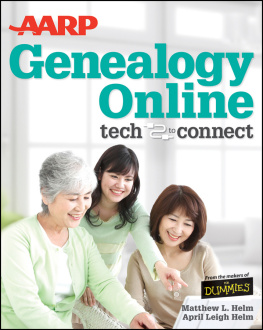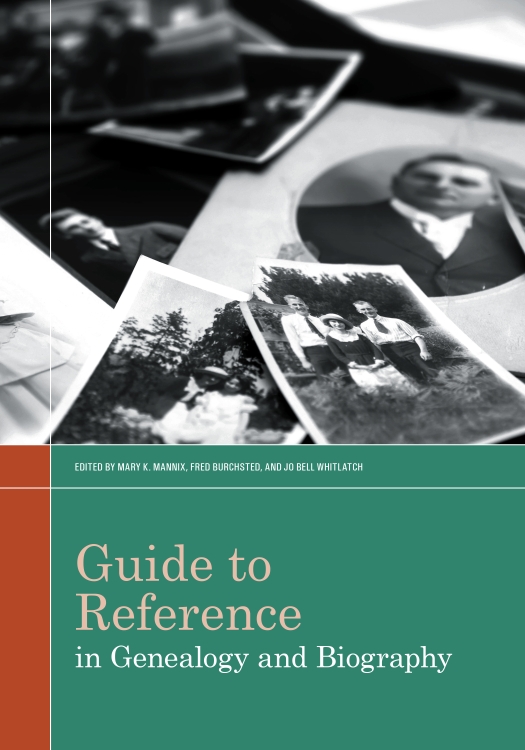
ALA Editions purchases fund advocacy, awareness, and accreditation programs for library professionals worldwide.
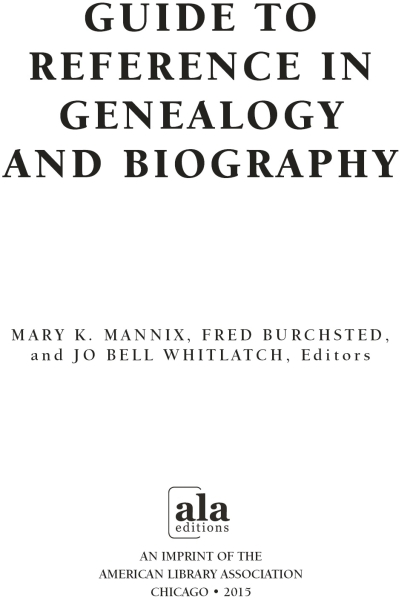
2015 by the American Library Association
Extensive effort has gone into ensuring the reliability of the information in this book; however, the publisher makes no warranty, express or implied, with respect to the material contained herein.
ISBNs: 978-0-8389-1294-2 (paper); 978-0-8389-1295-9 (PDF); 978-0-8389-1296-6 (ePub); 978-0-8389-1297-3 (Kindle).
Library of Congress Cataloging-in-Publication Data
Guide to reference in genealogy and biography / Mary K. Mannix, Fred Burchsted, and Jo Bell Whitlatch, editors.
pages cm
Includes bibliographical references and .
ISBN 978-0-8389-1294-2 (print : alk. paper) ISBN 978-0-8389-1295-9 (pdf) ISBN 978-0-8389-1296-6 (epub) ISBN 978-0-8389-1297-3 (kindle) 1. BiographyBibliography. 2. GenealogyBibliography. 3. BiographyReference booksBibliography. 4. GenealogyReference booksBibliography. 5. BiographyComputer network resourcesDirectories. 6. GenealogyComputer network resourcesDirectories. I. Mannix, Mary K., editor. II. Burchsted, Fred., editor. III. Whitlatch, Jo Bell, editor.
Z5301.G85 2015
[CT104]
016.9291072dc23 2014045259
Cover design by Alejandra Diaz. Image Karin Hildebrand Lau / Shutterstock, Inc.
Contents
Mary K. Mannix
Fred Burchsted and Anna Esty
The American Library Association has long been a source for authoritative bibliographies of the reference literature for practicing librarians, library educators, and reference service trainers. ALAs Guide to Reference Books was printed in eleven editions over nearly a century, and was succeeded in 2009 by the online Guide to Reference (www.guidetoreference.org). The Guide to Reference segments, drawn from the online Guide, continue that tradition with expertly compiled, annotated bibliographies of reference works and serve as snapshots of the evolving content of the Guide.
Although intended for use largely in North American libraries serving institutions of higher education, the segments will also be valuable to public and school librarians, independent researchers, publishers and book dealers, as well as librarians outside North America, for tasks such as identifying sources that will answer questions, directing researchers, creating local instructional materials, educating and training LIS students and reference staff, and inventorying and developing reference collections. These guides provide a usably comprehensive, rather than exhaustive, repertory of sources as the foundation for reference and information services in todays higher education settings. They include works that can most usefully satisfy the vast majority of demands made on a reference service, while not altogether excluding exotic or little-known works that will meet only the unusual need.
In addition to providing classified annotated bibliographies, topical sections include editors guides that orient readers to each subject, its scope and concerns, and the types of sources commonly consulted. The editors guides will be useful to the generalist librarian and to the LIS student as background to the bibliographies or as intellectual frameworks for addressing reference questions.
The reader will find entries for works that are, for the most part, broadly focused; works on individual persons or with a narrow geographical or chronological focus are generally not included. Selection criteria favored titles published in the last twenty years; the reader may consult earlier printed bibliographies and indexes, such as the numerous print editions of the Guide to Reference Books, for many earlier and still important works. As libraries shift their print reference works to the general stacks or to remote locations, the online Guide and its older print editions may help to identify reference works that are no longer close at hand.
Sources in the Guide include websites, search engines, and full-text databases as well as the traditional array of encyclopedic, bibliographic, and compendious works. Online sources have replaced their printed versions for most librarians under most circumstances. A source only appears in one format; its annotation will identify the format options and describe the relationships between online and print versions. New reference works or editions are not automatically included in the Guide. Selection criteria favor sources that have stood some test of time and utility, as well as sources that are free but authoritative or sources that require purchase or licensing and are held at enough libraries to be reasonably available to readers of the Guide.
The reader is encouraged to peruse the annotations of entries in the same subcategory as known items. An annotation may contain extensive cross references to related sources that are not described separately as well as comparisons to related sources, indications of appropriate audiences for the source, and other details that provide significant added value. In the online Guide to Reference, titles mentioned in the annotations of sources are linked electronically to citations; however, readers using the segments need to consult WorldCat or a similar source to obtain full citations for titles. In an attempt to balance inclusion and exhaustion, a source may be included in several but not necessarily all relevant subcategories.
This segment on Genealogy and Biography Sources includes sources for each patron and librarian in every type of library. Biographies are central to any general reference collection. When a person cannot be found in standard biographical sources, genealogical sources offer excellent starting points for research. Also, genealogists often consult biographical sources as part of their family history research.
Biographical and genealogical reference have been revolutionized by online indexing tools such as Biography and Genealogy Master Index and online full-text sources, including World Biographical Information System, Biography in Context, and Biography Reference Bank. For biography, initial searching is usually electronic, but the online sources often lead to still-valuable printed sources. Reference sources have grown tremendously in biography and genealogy. In biography, online sources frequently supplement rather than replace printed resources; whereas in genealogy, online sources more frequently replace printed resources. The primary areas in genealogy where print is still important are research manuals, heraldry, and onomastics. In the future, new electronic biographical and genealogical sources and digitalized versions of old print sources will become increasingly important.
Reference librarians have a responsibility for developing valuable reference collections, regardless of format. Local needs and circumstances should determine the final set of core works for individual librarieswhich sources in your library are basic sources that would be frequently used for certain types of queries as a place to start in locating information. Within these limitations, this segment will be useful in evaluating and updating basic reference collections.
Guide to Reference in Genealogy and Biography will assist instructors and LIS students as well as paraprofessional staff in learning basic reference sources. For professionals, keeping up in the field has always been important. But rapid changes in technology require even more emphasis on professional development in the 21st century. Yet, knowledge of reference sources still remains an important factor in many successful reference transactions. Along with search engines and search techniques, reference sources are continually evolving. Thus, knowledge and skills require constant updating. Experienced reference librarians will want to use this annotated list of sources to assess their knowledge of sources and to become acquainted with sources they have not previously used.
Next page
